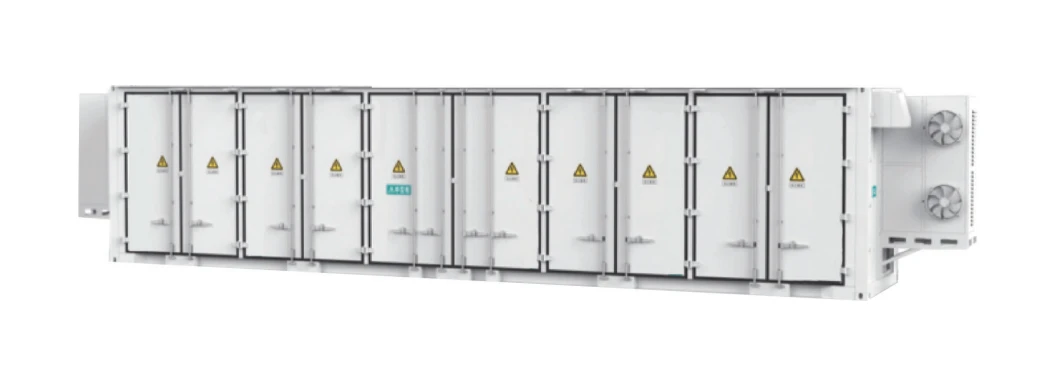
Aug . 13, 2025 00:40 Back to list
Optimize Energy with Advanced Management Systems
Navigating the Landscape of Modern Energy Management
In the rapidly evolving industrial and commercial sectors, efficient resource utilization is paramount. A sophisticated energy management system (EMS) is no longer a luxury but a strategic imperative. These systems integrate advanced hardware and software to monitor, control, and optimize energy consumption across diverse operations, from large-scale manufacturing plants to smart city infrastructure. The primary goal is to minimize energy waste, reduce operational costs, and contribute to sustainability initiatives. Modern EMS solutions leverage AI, machine learning, and IoT technologies to provide real-time insights and predictive analytics, transforming reactive energy management into a proactive strategy. This shift is crucial for businesses aiming to enhance their energy resilience and achieve their decarbonization targets in an increasingly energy-conscious world. The continuous development of these systems signifies a global commitment to smarter, more sustainable energy practices, driving innovation in renewable energy integration and grid stability.
Current industry trends highlight a significant move towards integrated and decentralized energy management. The rise of distributed energy resources (DERs), such as solar PV and battery storage, necessitates an advanced energy management system that can seamlessly orchestrate these diverse sources. The demand for oem energy management system solutions is also increasing, as original equipment manufacturers seek to embed intelligent energy control capabilities directly into their products, offering enhanced value and efficiency to end-users. This integration allows for a more holistic approach to energy consumption, where everything from HVAC systems to production lines communicates within a unified framework. Furthermore, regulatory pressures and corporate sustainability goals are accelerating the adoption of these technologies, pushing companies to invest in robust EMS platforms that can not only track energy usage but also optimize generation, storage, and consumption patterns to achieve peak efficiency and compliance.
Core Components and Technical Specifications of an Advanced EMS
A robust energy management system typically comprises several interconnected components working in synergy. These include smart meters and sensors for data acquisition, a centralized data processing unit (often cloud-based) for analytics, and intelligent controllers for load management and optimization. Communication protocols like Modbus, BACnet, and OPC UA ensure seamless data exchange between devices. The "brain" of the energy management system ems is its software platform, which provides dashboards for visualization, tools for performance analysis, and algorithms for predictive control. These systems often incorporate features such as demand-side management (DSM), peak shaving, and power factor correction to maximize efficiency and minimize utility costs. Understanding these technical elements is crucial for businesses evaluating potential EMS solutions, ensuring compatibility with existing infrastructure and future expansion capabilities. The modular nature of modern EMS platforms allows for scalable deployment, from small commercial buildings to sprawling industrial complexes.
| Parameter | Description | Typical Range/Value |
|---|---|---|
| Data Sampling Rate | Frequency at which energy data is collected from sensors and meters. | 1 second to 5 minutes |
| Communication Protocols | Supported standards for device communication. | Modbus TCP/RTU, BACnet/IP, OPC UA, LoRaWAN, Zigbee |
| System Scalability | Ability to expand the system to accommodate more devices and data points. | From 100 to 100,000+ data points |
| Data Storage Capacity | Volume of historical data that can be stored and accessed. | Cloud-based (unlimited), On-premise (Terabytes) |
| Reporting & Analytics | Types of reports and analytical tools available. | ISO 50001 compliance, energy baselining, cost allocation, carbon footprint |
| Integration Capabilities | Compatibility with other enterprise systems (e.g., BMS, ERP). | API access, SDKs, native connectors |
Manufacturing Process and Quality Assurance for EMS Components
The reliability and longevity of an energy management system are directly tied to the meticulous manufacturing processes of its components. From sensors to control modules, each part undergoes rigorous production steps. High-grade materials such as industrial-grade alloys for enclosures, advanced polymers for insulation, and specialized silicon for circuit boards are selected based on durability and performance requirements. Manufacturing often involves precision processes like CNC machining for metal components, ensuring tight tolerances for optimal fit and function. For critical electronic components, a controlled environment is maintained to prevent contamination, with processes like automated surface-mount technology (SMT) for circuit board assembly. For example, battery components within a centralized energy storage system, a key element of comprehensive energy management, demand precision welding and assembly to ensure safety and efficiency.
Quality control is embedded at every stage. Initial material inspection verifies compliance with specifications. In-process checks monitor dimensions, electrical parameters, and connection integrity. Final product testing includes functional tests, burn-in tests to identify early failures, and calibration against known standards. Adherence to international standards such as ISO 9001 for quality management and ISO 14001 for environmental management is crucial. Components often meet ANSI standards for electrical safety and performance. The typical lifespan of robust energy management system ems hardware can exceed 15-20 years, provided proper installation and maintenance. This extended operational life is a testament to the stringent manufacturing protocols and the selection of durable materials, designed to withstand harsh industrial environments, including those with high temperatures, humidity, or corrosive elements. For instance, protective coatings are applied to circuit boards and enclosures to enhance anti-corrosion properties, ensuring sustained performance in demanding sectors like petrochemical and metallurgy.

Diverse Application Scenarios and Key Advantages
The versatility of a modern energy management system allows its application across a wide spectrum of industries, delivering significant benefits in energy efficiency and operational resilience. In the petrochemical sector, EMS solutions monitor and optimize the vast energy consumption of pumps, compressors, and distillation units, often leading to substantial reductions in electricity and fuel costs. For metallurgy, these systems are critical in managing the high power demands of furnaces and rolling mills, ensuring stable power supply and minimizing peak load charges. In the water supply and drainage industry, EMS controls pump scheduling based on demand and energy prices, optimizing water distribution and wastewater treatment processes for both efficiency and environmental compliance. Beyond these, industries like automotive manufacturing, data centers, and commercial real estate also heavily rely on these systems to streamline their energy footprint.
The technical advantages are multifaceted. First, an energy management system ems provides granular visibility into energy consumption, identifying areas of waste and inefficiency. Second, it enables automated control over loads, allowing for peak demand reduction and optimized scheduling, directly impacting electricity bills. Third, integrated analytics facilitate predictive maintenance by detecting abnormal energy patterns that could indicate equipment malfunction, thereby preventing costly downtime. Moreover, the inherent anti-corrosion properties of system components ensure reliable operation even in challenging industrial environments. For example, in water treatment plants, components resistant to chemical exposure guarantee longevity. The capacity of an oem energy management system to be tailored for specific equipment, providing built-in intelligence, further enhances these advantages by delivering a plug-and-play solution optimized for particular machinery or process lines, ensuring immediate value and long-term savings.
Manufacturer Comparison and Tailored Solutions
Choosing the right energy management system provider is a critical decision that hinges on various factors, including technological prowess, industry experience, and post-sales support. While many vendors offer standard EMS platforms, the true value often lies in their ability to provide customized solutions that align with specific operational demands. A manufacturer specializing in oem energy management system offerings might excel in integrating their EMS directly into your existing machinery, ensuring optimal performance from day one. On the other hand, a broad-spectrum provider might offer a more comprehensive software suite suitable for enterprise-wide deployment across multiple facilities. Evaluating a provider's service history, client testimonials, and adherence to certifications such as ISO 50001 (Energy Management Systems) can offer significant insights into their reliability and authority within the industry.
| Feature/Criteria | Provider A (Specialized OEM) | Provider B (Comprehensive Enterprise) | Our Solution (Centralized Energy Storage System) |
|---|---|---|---|
| Primary Focus | Embedded EMS for specific equipment | Large-scale facility & multi-site energy management | Integration with Centralized Energy Storage for optimized demand/supply |
| Integration Capability | Deep hardware integration, limited 3rd party software | Extensive API for ERP, BMS, SCADA integration | Seamless integration with BESS, renewable sources, grid; open API for building systems |
| Customization Level | High (hardware/firmware level) | Moderate (software configuration, dashboards) | Very High (algorithm tailoring, hardware adaptation, control strategies) |
| Predictive Analytics | Basic anomaly detection | Advanced AI/ML for forecasting & optimization | AI-driven demand forecasting, real-time optimal dispatch, fault prediction for storage |
| Typical Deployment | Individual machines, small factories | Large industrial facilities, commercial chains | Utility-scale storage, large industrial sites with on-site generation, microgrids |
Our approach focuses on providing highly customized energy management system solutions, particularly for applications involving centralized energy storage systems. This specialization allows us to optimize the interplay between energy generation, consumption, and storage, leading to unparalleled efficiency. We work closely with clients to understand their unique energy profiles and operational constraints, designing an EMS that not only meets their current needs but also provides the flexibility for future expansion and adaptation to evolving energy landscapes. This deep customization ensures that the investment in an EMS yields maximum returns, by perfectly aligning the technology with the business's strategic energy objectives.
Real-World Application Cases and Proven Performance
The efficacy of an energy management system is best demonstrated through its tangible impact on operational efficiency and cost savings. Consider a large-scale manufacturing plant that implemented our customized energy management system ems integrated with a centralized energy storage system. Prior to implementation, the plant experienced significant peak demand charges due to simultaneous operation of heavy machinery. Our EMS analyzed their historical energy consumption patterns and real-time electricity prices. Using AI-driven algorithms, it intelligently scheduled the charging and discharging of the centralized energy storage system to shift peak loads to off-peak hours, effectively shaving 25% off their monthly peak demand charges. Furthermore, the system identified and optimized the operational schedules of non-critical loads, leading to an additional 10% reduction in overall energy consumption. This success story showcases the direct financial benefits and the enhanced grid stability achieved through sophisticated EMS deployment.
Another compelling case involves a major port authority that deployed our oem energy management system tailored for their electric container111 cranes. These cranes, critical to port operations, consumed vast amounts of energy with significant regenerative braking losses. Our specialized EMS was embedded within each crane, capturing regenerative energy and feeding it back into a local microgrid supported by battery storage. This not only reduced the energy drawn from the main grid but also minimized wear and tear on mechanical braking systems. Customer feedback highlighted a 15% reduction in energy costs for the crane operations and a noticeable improvement in overall operational fluidity. These examples underscore our experience in delivering practical, high-impact EMS solutions, backed by robust testing data and a commitment to long-term client success and support.
Ensuring Trust and Reliability: FAQs and Support
Building trust is fundamental in the B2B sector, particularly for long-term investments like an energy management system. Our commitment to reliability is demonstrated through transparent processes, comprehensive support, and adherence to global standards. We hold certifications such as ISO 9001 for quality management and ISO 14001 for environmental management, ensuring that every energy management system ems solution we provide meets the highest benchmarks. Our products also comply with relevant ANSI and IEC standards, reflecting our dedication to safety and performance. The service life of our core EMS components is backed by extensive testing, often exceeding industry averages, and we provide clear documentation on expected longevity and maintenance schedules. Our team of experts is available for comprehensive post-installation support, ranging from software updates and system calibration to troubleshooting and performance optimization, ensuring continuous value for our clients.
Frequently Asked Questions (FAQs) about Energy Management Systems
-
Q: What is the typical delivery cycle for an EMS solution?
A: The delivery cycle for an energy management system varies depending on customization complexity and scale. For standard configurations, it can range from 4-8 weeks from order confirmation. Highly customized or large-scale projects may require 12-20 weeks, including design, manufacturing, and initial deployment. We provide detailed project timelines upon consultation. -
Q: What kind of warranty do you offer on your EMS products?
A: We offer a standard 2-year warranty on all energy management system hardware components, covering manufacturing defects and performance anomalies under normal operating conditions. Software licenses typically include 1 year of free updates and technical support, with extended service agreements available. Specific warranty terms are outlined in our service agreements. -
Q: How does your EMS integrate with existing facility infrastructure?
A: Our energy management system is designed for high interoperability. We support a wide range of industry-standard communication protocols (Modbus, BACnet, OPC UA) and offer open APIs for seamless integration with Building Management Systems (BMS), Manufacturing Execution Systems (MES), and Enterprise Resource Planning (ERP) software. Our technical team assists with integration planning and execution to ensure a smooth transition. -
Q: What kind of customer support is available post-installation?
A: We provide comprehensive customer support, including a dedicated helpdesk, remote diagnostics, and on-site technical assistance when required. Our support packages can be tailored to client needs, offering various service level agreements (SLAs) for response times and preventative maintenance visits. Training programs are also available to empower your team with effective EMS operation.
Conclusion and Future Outlook
The strategic adoption of an advanced energy management system is pivotal for any organization aiming for operational excellence, cost reduction, and environmental stewardship. By providing unparalleled visibility, control, and optimization capabilities, these systems transform energy consumption from a burden into a competitive advantage. The integration of artificial intelligence and machine learning continues to push the boundaries of what an energy management system ems can achieve, moving towards increasingly autonomous and predictive operations. As the global energy landscape shifts towards renewables and distributed grids, the role of robust and intelligent EMS solutions will only become more critical in maintaining stability, efficiency, and sustainability across all sectors.
Investing in a tailored oem energy management system means investing in a future where energy is managed not just efficiently, but intelligently. Our commitment to innovation, quality, and comprehensive customer support ensures that our clients receive a solution that is not only technologically superior but also perfectly aligned with their long-term strategic goals. We believe that effective energy management is the cornerstone of sustainable industrial growth, and we are dedicated to providing the tools and expertise to achieve it.
Authoritative References
- International Organization for Standardization (ISO) - ISO 50001:2018 Energy Management Systems.
- Institute of Electrical and Electronics Engineers (IEEE) Transactions on Smart Grid.
- U.S. Department of Energy (DOE) - Energy Efficiency & Renewable Energy.
- American National Standards Institute (ANSI) Standards related to energy efficiency.
- Renewable and Sustainable Energy Reviews - Academic Journal.
- Elsevier - Applied Energy Journal.
This is the last article
-
Optimize Energy with Advanced Management Systems
NewsAug.13,2025
-
Energy Management System: Optimize & Save | OEM EMS Solutions
NewsAug.12,2025
-
Efficient Energy Storage Cabinet for Solar Battery & EMS
NewsAug.11,2025
-
Energy Management System (EMS): Optimize Efficiency & OEM
NewsAug.10,2025
-
Energy Management System: Monitor, Control, Optimize Costs
NewsAug.09,2025
-
Advanced Energy Storage Systems (ESS) - Reliable & Scalable
NewsAug.08,2025























